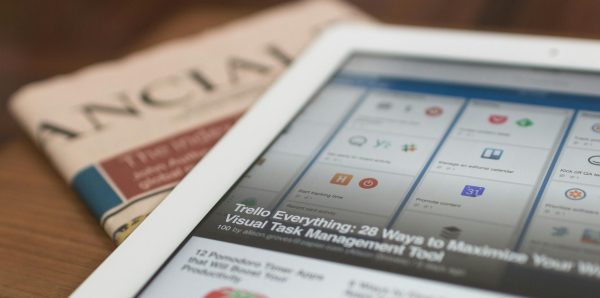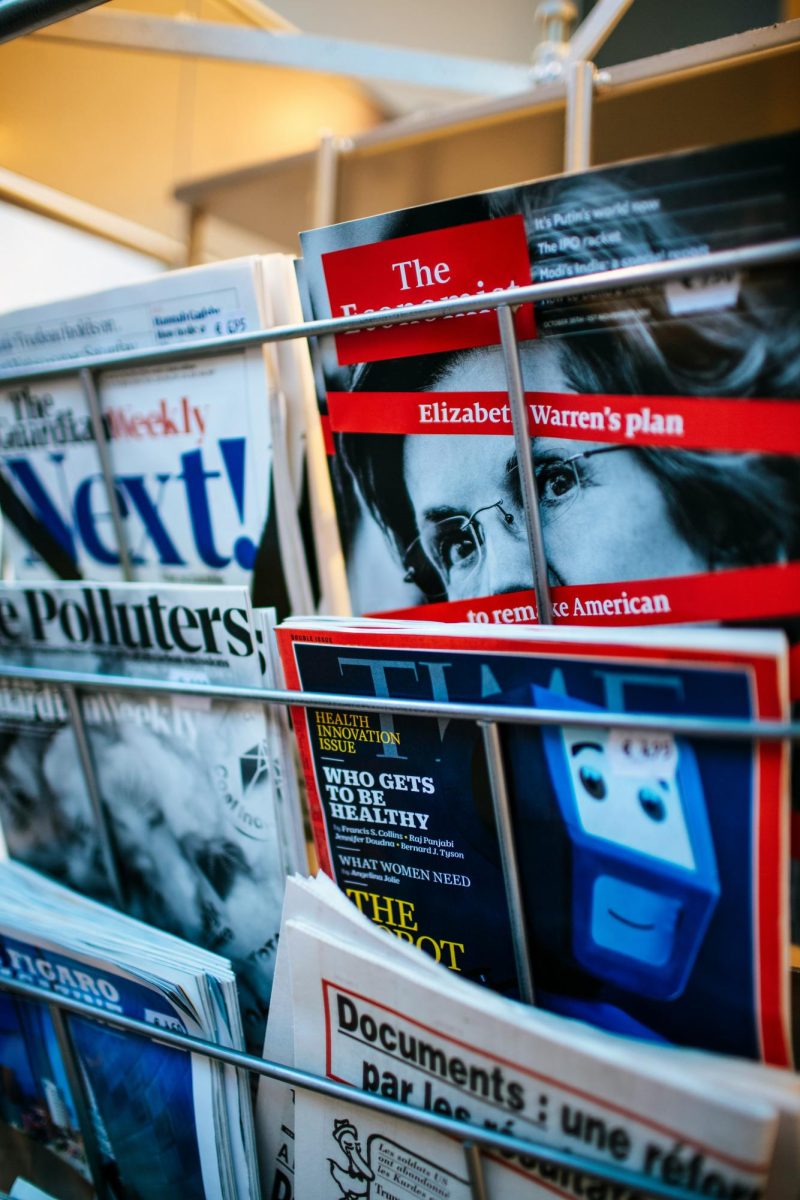The news has gradually shifted from being strictly factual and informative to now feeding a biased narrative of political affairs. Some of the information being reported in the media now no longer goes through the professional checking processes it once did. How did this happen?
The media used to follow a strict code of media ethics in order for a journalistic piece to be published for the public. This would mandate checking an article for factual information, accuracy, fairness, transparency, conflicts of interest, and deception. While it still applies in our modern media today, there have been several changes made throughout the years. Now it seems there is a competition for views and clicks on a journalistic article. Social media, donations from donors, politicalization, and overall public interest seem to be of utmost importance. This creates a disproportionate focus on certain areas of news or topics that the media may zoom in on.
Because of this publication bias, it now causes a lot of distrust in our news and media today.
The consequences of increasing media bias can lead to negative social outcomes such as group polarization and political segregation. Why should people have to do deep research when they should be able to trust the news in the first place? The amount of misinformation in the news is now causing various social divides amongst this generation. We are exposed to one-sided information and biased news daily, making it normal for us to be exposed to biased media every day.

Enacted in 1947 and lasting until 1987, the Fairness Doctrine was in place in the United States. The doctrine required licensed radio and television broadcasters to present balanced and unbiased coverage of controversial issues to the American people. This was viewed as “a basic standard of fairness” in the broadcasting and media industries. The broadcasts were mandated to dedicate airtime to both sides of issues, presenting factual information alongside the full picture so that it was neutral.
This doctrine was controversial as many critics thought that it violated the constitutional freedom of speech. In 1969, the doctrine was challenged in the Supreme Court case Red Lion Broadcasting Co v. Federal Communications Commission. The Federal Communications Commission had acted upon a ruling that the Broadcasting company had violated the doctrine by denying airtime to a writer who had been portrayed as a communist sympathizer. This would in turn make the broadcast biased as it only exhibited one side to the accusation.
In 1987, the doctrine was repealed, but conditions in order to regulate were still put in place. However, in 2011, all of the doctrine’s conditions were lifted allowing all broadcasting stations and news networks to be able to report biased or unbiased, without going through bias regulations.
I spoke with Nic Newman, a visiting fellow at the Reuters Institute at the University of Oxford, founder of the BBC News Website, and Head of Product Development. He told me, “Anyone can have an opinion for anything. So I think that a part of it is just the change of technology and the change of the internet and social media. The other point that relates to different countries is that in different countries, regulation makes a difference. So in 1987, I think it was in the U.S. that abolished the Fairness Doctrine, and the Fairness Doctrine said that broadcast networks needed to give fair time or equal time to different perspectives on different issues. They couldn’t just put one point of view and Ronald Reagan in ’87 got rid of that. And that has led broadcast – particularly broadcast in the U.S. to be incredibly partisan. So it’s sort of divided off into left and right, in the U.K. and in most European countries that hasn’t happened. There is still regulation of broadcast networks which are still hugely important. And broadly they have a duty to be impartial and represent lots of different views.”
It seems that this bias appears to be predominantly within the United States. Mostly it seems this is due to the fact that the indoctrination was lifted. Europe still maintains regulations for their media and journalism. Acts such as the DSA regulation aim to regulate platforms in their media in order to help prevent false information. Acts like these still remain in other countries outside of the U.S. as well.
“It’s one of the reasons why the U.S. media system in particular is often seen as much more partisan. Certainly the television part of it, which is crucially important, is seen as much more partisan than, say, in Europe. And then finally there are differences in attitudes to the balance between free speech and free opinion, which in the U.S. is enshrined in the Constitution and in European countries where people are much more aware of the balance that needs to be struck in terms of the harms that might be caused by extreme free speech and free opinion. And so you get, again, different attitudes to what is allowed to be said in terms of the extent of opinion in Europe compared within the United States.”
There are several debates about the meaning of free speech in our country today, what it means in our country and how it is interpreted by several different groups of people. This entails how open our constitution is open for interpretation and how these evaluations affect the news and media industry, and the extent of opinions within our country.
Most people only think that the issue is that there is only one opinion being reported. However, others worry that there are too many opinions out there. Social media platforms such as Instagram and TikTok are also causes for multiple divisions within the media. People are subject to too many statements and options, and it is overwhelming to filter out fact and opinion.
Several social media platforms use algorithms based on what you view, like, and follow, in order to build a “for you” page that is personally accustomed to your interests. This helps feed the bias, because it is all very one sided and is intentionally feeding you only what you want to hear. This doesn’t obtain any sense of neutrality or gives any headway to other sides of a topic you may be interested in. While multiple people see social media as having too many options, it also may only be giving you one option as to what you are seeing. These social media platforms essentially give you all of the power to customize only what you want to see.
Newman discussed his own experiences in this area, saying, “You know, broadly, I would say that we have seen journalism change hugely in my working life. It’s mainly because of the internet and the abundance of choice. So, originally there weren’t any choices; you had to have money to own a printing plant and broadcasting was expensive. So there was a constraint, a lot of the power was in the hands of big media companies. There weren’t very many of them, and they competed with each other, but they had this sort of code of ethical journalism.”
The debate between wanting more regulation and maintaining free speech has continued for decades. People argue that biased networks spread chaos, claiming that these networks are all that people can seem to access in this modern era. There is an existing narrative that nothing is truly factual and how it is now up to the people to carry the burden of digging in order to find out the truth. Many people think that this should be the media’s job and that there should be regulations in place to remain neutral and to have a sense of strictly factual information. This shouldn’t have to be the people’s responsibility.
Newman further touches on the arguments made about society having too many choices in our media. He explains, “The other point is that I think what’s happened with the internet and with social media is you’ve got this sort of explosion of choice that anybody can have an opinion, and anyone can be a citizen journalist. There are so many points in time that we could point to – the birth of Facebook and Twitter, the Arab Spring in 2008, 2009 – where people could express themselves more freely through these social networks. They didn’t have to go through media companies. And that was thought of as a good thing. And then you sort of wind forward to today where there’s just opinion everywhere, and people are struggling to find the facts because, you know, opinion is really easy to produce. And fact-based journalism is hard to produce quite often because you need to get to the heart of what’s happening in Gaza or Ukraine. And that’s expensive and difficult. But anyone can have an opinion for anything.”
Misinformation and media bias continues to affect our society today, specifically in America. It seems that America right now is more divided than ever, and the media contributes to this. If people don’t watch or inform themselves of both sides of situations and events, it is very easy for people to just watch what they want to see and hear what they want to hear. They want to hear what they agree with, which may not be the truth. Ultimately it is now up to individual news networks to fix this, and provide the information for their audience.
Misinformation and media bias continues to affect our society today, specifically in America. It seems that America right now is more divided than ever, and the media contributes to this.

